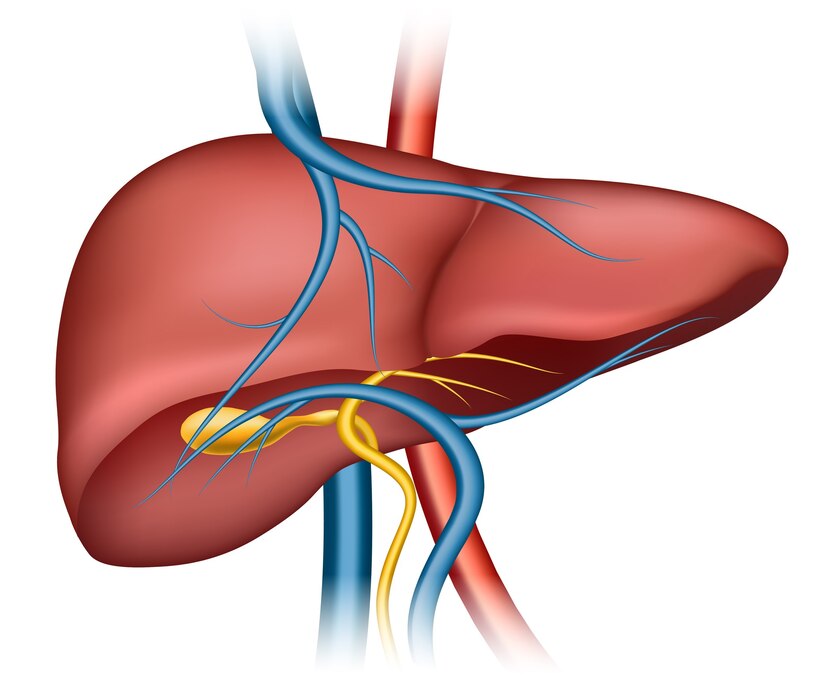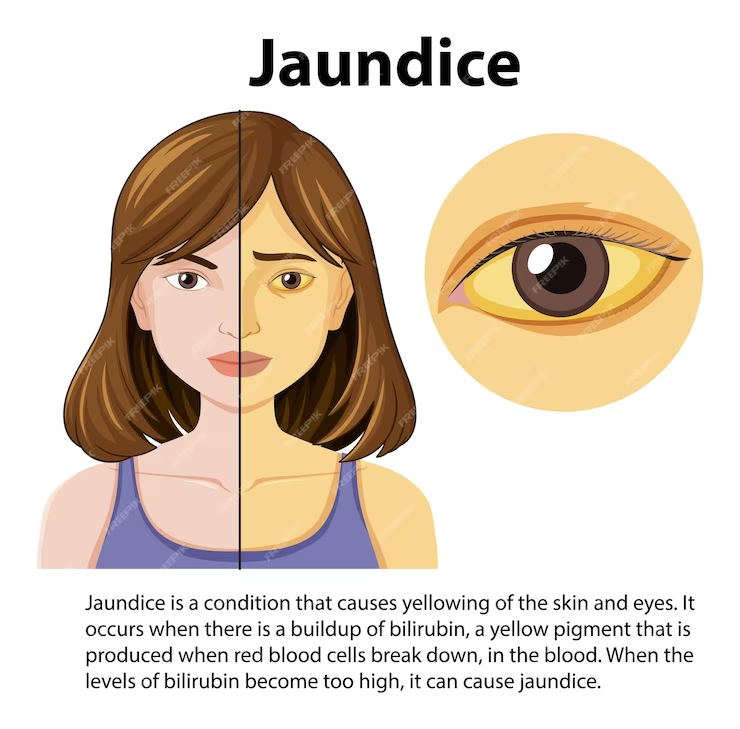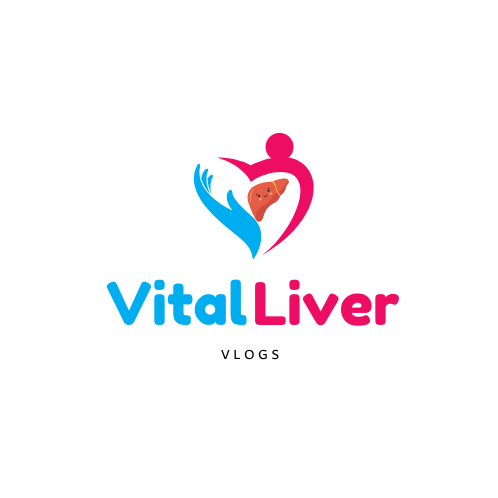- Introduction
- Brief overview of jaundice
- Importance of understanding jaundice
- What is Jaundice?
- Definition
- How jaundice affects the body
- Types of Jaundice
- Pre-hepatic jaundice
- Hepatic jaundice
- Post-hepatic jaundice
- Causes of Jaundice
- Liver diseases
- Blood disorders
- Blockage of bile ducts
- Symptoms of Jaundice
- Yellowing of the skin and eyes
- Dark urine
- Pale stools
- Other common symptoms
- Diagnosis of Jaundice
- Physical examination
- Blood tests
- Imaging tests
- Liver biopsy
- Treatment Options for Jaundice
- Medications
- Lifestyle changes
- Surgical procedures
- Home remedies
- Complications of Jaundice
- Chronic liver disease
- Gallstones
- Pancreatitis
- Prevention of Jaundice
- Vaccination
- Healthy diet
- Regular exercise
- Avoiding alcohol and drugs
- Diet and Nutrition for Jaundice Patients
- Foods to eat
- Foods to avoid
- Importance of hydration
- Jaundice in Newborns
- Causes in newborns
- Symptoms in newborns
- Treatment for newborn jaundice
- When to See a Doctor
- Warning signs
- Importance of early detection
- Living with Jaundice
- Coping strategies
- Support systems
- Myths and Facts about Jaundice
- Common misconceptions
- Accurate information
- Conclusion
- Summary of key points
- Final thoughts
- FAQs
- Can jaundice be cured?
- Is jaundice contagious?
- How long does jaundice last?
- Can diet help with jaundice?
- What are the risks if jaundice is left untreated?

Understanding Jaundice: A Comprehensive Guide
Jaundice is a condition that many people have heard of, but few understand in depth. It’s essential to know about jaundice because it can indicate underlying health issues that need prompt attention. Let’s dive into what jaundice is, its causes, symptoms, and how it can be treated and prevented.
What is Jaundice?
Jaundice is a medical condition characterized by the yellowing of the skin and eyes. This yellowing occurs due to high levels of bilirubin, a yellow pigment produced during the breakdown of red blood cells. When the liver cannot effectively process bilirubin, it accumulates in the body, leading to jaundice.
Types of Jaundice
Understanding the types of jaundice helps in identifying the underlying causes and appropriate treatments.
Pre-hepatic Jaundice
Pre-hepatic jaundice occurs before bilirubin is processed by the liver. It is usually due to increased breakdown of red blood cells, leading to excessive production of bilirubin.
Hepatic Jaundice
Hepatic jaundice happens when there is a problem within the liver itself. Conditions like hepatitis or liver cirrhosis can impair the liver’s ability to process bilirubin.
Post-hepatic Jaundice
Post-hepatic jaundice, also known as obstructive jaundice, occurs after bilirubin has been processed by the liver. This type is usually caused by blockages in the bile ducts, which prevent bilirubin from being excreted from the body.
Causes of Jaundice
Jaundice can result from various conditions, and identifying the cause is crucial for effective treatment.
Liver Diseases
Liver diseases such as hepatitis, cirrhosis, and liver cancer can significantly affect the liver’s ability to process bilirubin, leading to jaundice.
Blood Disorders
Certain blood disorders, such as hemolytic anemia, cause increased breakdown of red blood cells, producing more bilirubin than the liver can handle.
Blockage of Bile Ducts
Conditions like gallstones, tumors, or inflammation can block the bile ducts, preventing bilirubin from being excreted and causing it to build up in the body.
Symptoms of Jaundice
The most noticeable symptom of jaundice is the yellowing of the skin and eyes, but other symptoms can also indicate the presence of this condition.
Yellowing of the Skin and Eyes
This is the hallmark symptom of jaundice and is due to the accumulation of bilirubin in the tissues.
Dark Urine
Excess bilirubin can cause the urine to become dark yellow or brown.
Pale Stools
A lack of bilirubin reaching the intestines can result in pale or clay-colored stools.
Other Common Symptoms
Symptoms like fatigue, abdominal pain, weight loss, and itchy skin can also be associated with jaundice.
Diagnosis of Jaundice
Diagnosing jaundice involves several steps and tests to determine the underlying cause.
Physical Examination
A doctor will look for visible signs of jaundice and may check for tenderness in the abdominal area.

Blood Tests
Blood tests can measure levels of bilirubin, liver enzymes, and red blood cells to help diagnose the cause of jaundice.
Imaging Tests
Imaging tests like ultrasound, CT scans, and MRIs can help identify blockages in the bile ducts or abnormalities in the liver.
Liver Biopsy
In some cases, a liver biopsy may be necessary to diagnose liver diseases that cause jaundice.
Treatment Options for Jaundice
Treatment for jaundice depends on the underlying cause and can range from medication to surgery.
Medications
Medications can treat infections or manage liver diseases causing jaundice.
Lifestyle Changes
Dietary adjustments and avoiding alcohol can help manage jaundice and improve liver health.
Surgical Procedures
Surgery may be needed to remove blockages in the bile ducts or treat liver conditions.
Home Remedies
Staying hydrated and consuming a liver-friendly diet can support treatment and recovery.
Complications of Jaundice
If left untreated, jaundice can lead to serious complications.
Chronic Liver Disease
Persistent jaundice can indicate chronic liver conditions that require long-term management.
Gallstones
Gallstones can cause repeated episodes of jaundice and may require surgical removal.
Pancreatitis
Blockages in the bile ducts can lead to pancreatitis, a painful inflammation of the pancreas.
Prevention of Jaundice
While some causes of jaundice cannot be prevented, certain lifestyle choices can reduce the risk.
Vaccination
Vaccinations for hepatitis can prevent some types of liver disease that cause jaundice.
Healthy Diet
Eating a balanced diet with plenty of fruits, vegetables, and lean proteins supports liver health.
Regular Exercise
Regular physical activity helps maintain overall health and can prevent conditions that lead to jaundice.
Avoiding Alcohol and Drugs
Limiting alcohol intake and avoiding illicit drugs can prevent liver damage that causes jaundice.
Diet and Nutrition for Jaundice Patients
Diet plays a crucial role in managing jaundice and supporting liver function.
Foods to Eat
Include fruits, vegetables, whole grains, and lean proteins to support liver health.
Foods to Avoid
Avoid fatty foods, alcohol, and processed foods that can strain the liver.
Importance of Hydration
Staying hydrated helps the liver function properly and aids in the elimination of toxins.
Jaundice in Newborns
Newborn jaundice is common and usually harmless, but it requires monitoring and sometimes treatment.
Causes in Newborns
Newborn jaundice is often due to the immature liver’s inability to process bilirubin efficiently.
Symptoms in Newborns
Symptoms include yellowing of the skin and eyes, and sometimes lethargy or poor feeding.
Treatment for Newborn Jaundice
Treatment can involve phototherapy, which uses light to break down bilirubin in the skin.
When to See a Doctor
Recognizing when to seek medical attention is crucial in managing jaundice effectively.
Warning Signs
Seek medical help if you experience severe abdominal pain, persistent jaundice, or symptoms of liver disease.
Importance of Early Detection
Early detection and treatment can prevent complications and improve outcomes.
Living with Jaundice
Managing life with jaundice involves understanding and adapting to the condition.
Coping Strategies
Developing coping strategies, such as managing diet and stress, can help maintain quality of life.
Support Systems
Joining support groups or seeking counseling can provide emotional support and practical advice.
Myths and Facts about Jaundice
There are many misconceptions about jaundice that need to be clarified.
Common Misconceptions
One common myth is that jaundice is always due to hepatitis. In reality, there are many causes.
Accurate Information
Understanding the true causes and treatments of jaundice can help in managing and preventing the condition.
Conclusion
Jaundice is a complex condition with various causes, symptoms, and treatments. Understanding jaundice is crucial for effective management and prevention. By recognizing the signs and seeking appropriate care, individuals can maintain their health and well-being.
FAQs
Can jaundice be cured?
Yes, jaundice can often be treated by addressing the underlying cause. The treatment varies depending on the specific condition causing jaundice.
Is jaundice contagious?
No, jaundice itself is not contagious. However, some underlying causes, like hepatitis, can be contagious.
How long does jaundice last?
The duration of jaundice depends on its cause and the effectiveness of treatment. It can range from a few days to several weeks.
Can diet help with jaundice?
Yes, a healthy diet can support liver function and aid in the recovery from jaundice. It’s important to eat liver-friendly foods and stay hydrated.
What are the risks if jaundice is left untreated?
Untreated jaundice can lead to serious complications, such as chronic liver disease, gallstones, and pancreatitis. Early detection and treatment are crucial
